Travel Report: Kgalagadi (Gemsbok) Transfrontier Park, SA/Botswana
Writing about web page http://www.sanparks.org/parks/kgalagadi/

The Kalahari Gemsbok Park in South Africa, which has now become the Kgalagadi Transfrontier Park with its merger with the Gemsbok Park in Botswana across the border, is my favourite of the southern African wildlife reserves. It combines four of my top priorities: full desert with dune fields, big game, raptors, and a diversity of small but fascinating mammals.
After a long drive from Botswana, including a stop in Hotazel (pronounced Hot-as-hell, which is exactly what it is), as we neared the park the dunes began: red, sweeping, burning dunes – not as large as those of Merzouga in the Sahara, but all the same quite sublime. If you have never been to a desert dune-field, imagine yourself at the seaside, but with no sea, no water, no civilisation anywhere to be seen.
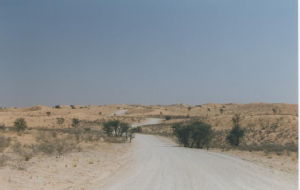 | 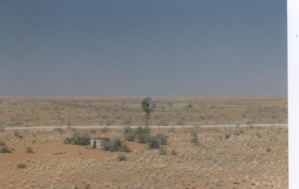 |
Dirt road through the dune fields. | A wind pump in the desolate Kalahari. |
But there is life. First of all, the tsama melon with its deep tap root accessing hidden water and swelling into a fruit:

These, and other such drought-defying flora, provides sustainance to an amazing variety of fauna, such as these dune-dwelling ostriches:

A food chain that even extends to the most powerful and hungry of predators:
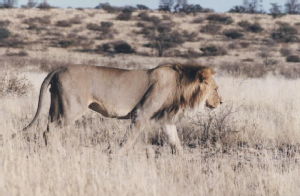 |  |
Our first drive out into the park gave us a dramatic view of these predator-prey interactions:
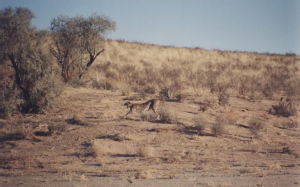 | 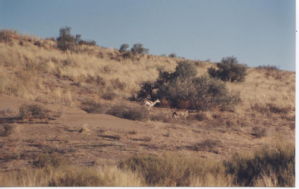 |
A hungry cheetah. | A meal wanders over the brow of a dune. |
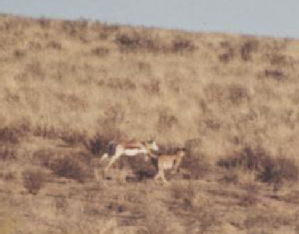 | 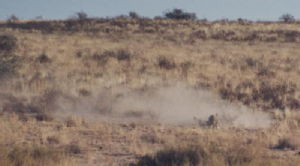 |
High speed chase between cheetah and springbok. | The springbok is tripped and the killer engages the prey. |
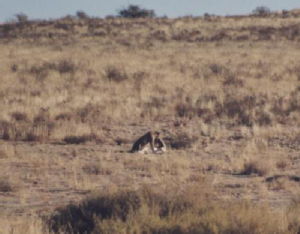 | 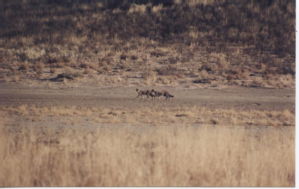 |
In an instant the springbok is converted into a meal. | Not cruelty but necessity, as the cheetah's young join its mother. |
But it's not all brutal drama in the sands. A wealth of smaller but equally beautiful creatures can be found, including some superb small carnivores:
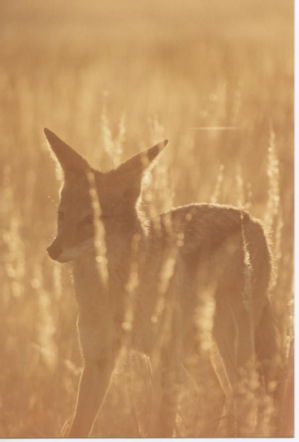 | 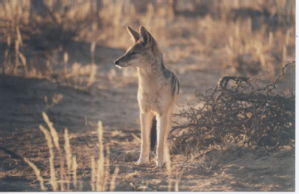 |
Side-striped jackal in the morning desert light. | Jackal portrait. |

A group of african wildcats, they actually behaved very much like domestic cats, and at one point walked under our Hilux.

The insectivorous bat-eared fox.
The birdlife is also surprisingly prolific:

A kori bustard.
We experienced many close-encounters with raptors:

Pale-chanting goshawk with a kill.
After several nights spent in the park, staying at the good National Parks huts at Nossob and Mata Mata, we left the desert with some great memories, not the least of which was of the gemsbok antelope after which the park is named, to be found deep in the dunes, looking quite majestic:
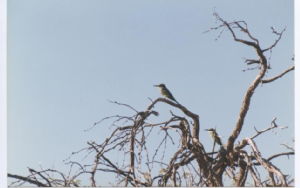
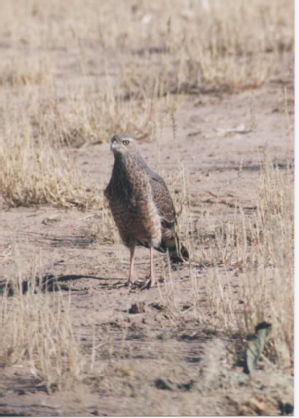

 Robert O'Toole
Robert O'Toole

Laurie
Lovely photos! I especially liked the bat-eared foxes – I really want to see them in the wild!
Great cheetah chase as well! Fantastic!
12 Oct 2005, 02:11
Great pictures! I've always wanted to go on a safari…
12 Oct 2005, 12:02
Robert O'Toole
Andrea, it's much easier and simpler than you would imagine. Just book a flight to Cape Town or Jo'burg (off peak £500), hire a small car at the airport (maybe around £75 a week), drive on the good SA roads to one of their national parks. Stay in the public accomodation. The chalets are cheap and excellent quality. Or even camp in their excellent campsites.
For more information, see: http://www.sanparks.org
12 Oct 2005, 13:17
Add a comment
You are not allowed to comment on this entry as it has restricted commenting permissions.